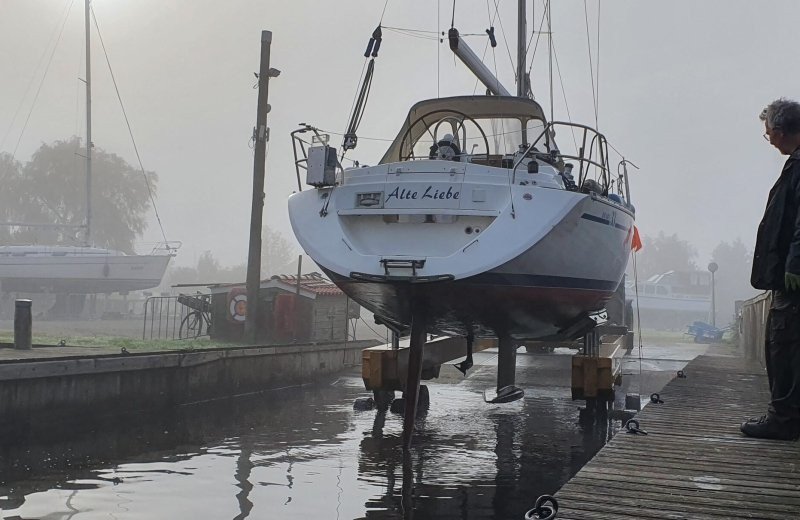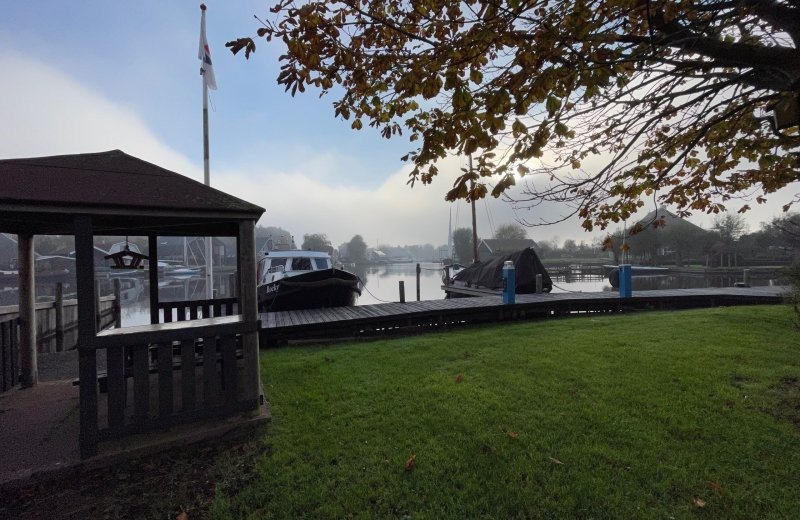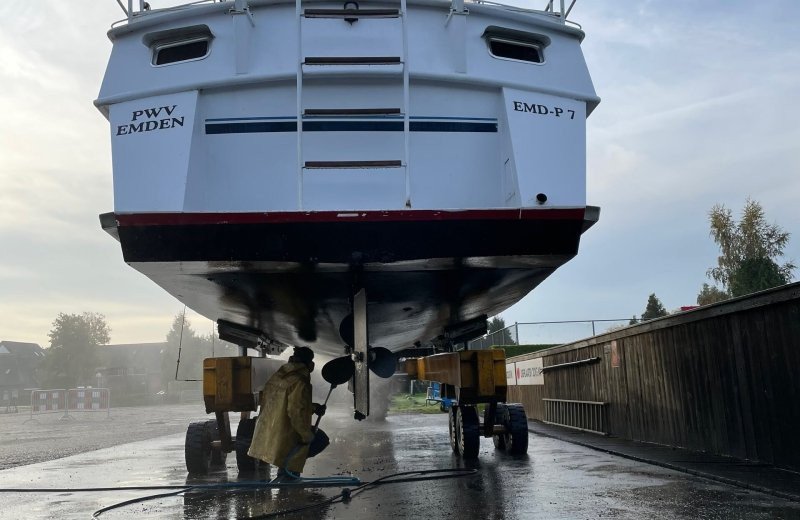1 October 2022
Six tips for winterising the boat
As a boat owner, you make a choice before the winter whether to leave your boat or ship in the water, or to put it on the shore. In either case, there are specific things you need to consider to keep your boat in good condition through the winter. We list six tips:
The most important things when winterising the boat are:
- The engine
- The technology, gas/electricity on board
- Toilet and drinking water supply
- The hull and deck
- The rigging
- The equipment/In the boat
1) The engine
Besides the regular maintenance that comes with the engine, such as changing oil, checking and renewing filters, it is most important for the winter period, when frost can be expected, to make it frost-proof. Don't think about this lightly, you can incur substantial damage to the engine if you don't do this.
First, you need to know whether you have an open or closed cooling water system. With a closed system, the cooling system is filled with coolant. Not much can go wrong with that. With an open cooling system, water is drawn in from outside to cool the engine. Here, however, it is important to winterise the engine properly. No water should remain in the system.
- Close the water inlet valve.
- Open the weed filter.
- Run the engine while quietly pouring antifreeze into the weed filter.
- Turn off the engine if antifreeze comes out the back of the cooling water system exhaust. (Do catch this with a bucket, antifreeze is very bad for the environment)
- Close the valves. Open and close the inlet valve once, so that antifreeze enters the ball/valve.
2) The technology, gas/electricity on board:
- Disconnect any gas cylinders on board and store them at home, preferably in a dry place with ventilation. Check gas hoses and couplings and replace them in time. (Replace hoses at least every 3 years).
- When a battery discharges, the electrolyte turns into water, which can therefore freeze. It is therefore advisable to keep your batteries fully charged. So putting them on the charger from time to time is wise. If you can easily take the batteries off board, you can store them in a dry (frost-free) place. Charging them there occasionally is also advisable. Also check whether the batteries need to be topped up (with distilled water).
- If possible, remove electrical equipment from board and store it at home, in a dry and warm place. On board, spray open connections and contact points with anti-corrosion moisture spray.
- Pay attention to rotating parts, such as steering column, winches, etc. Make sure gears etc. are greased.
- Remove water from the bilge and clean it. Also clean and dry the gas bunker thoroughly.
3) Toilet and drinking water supply:
- For all onboard water systems, use a NON-Toxic antifreeze. So do NOT use the toxic variety often used in cars. You can find the good kind at your watersports shop.
- Just pumping your toilet dry is not enough. Water can remain in bends and ledges. Disconnect the hose from the water inlet (close the valve, of course) and hang it in a reservoir of antifreeze. Pump it through the toilet and then close the valve to the outside.
- Drain all the water from the drinking water tank. If necessary, remove the last remaining water manually with a sponge via the inspection hole, immediately a good time to clean the tank. Make sure no water remains in the hoses and water pumps.
- Drain any boiler properly. For an electric boiler, disconnect the power first.
- Fill all valves on board with antifreeze. Pour antifreeze into the supply point/hose, open and close the valve once so that antifreeze remains in the ball.
- When your boat is on shore, close the valves (drain water out first). Cold and moisture gets in through open valves. Lubricating the valves before winter is wise against corrosion. (Through the skin grommet)
4) Hull and deck:
- Clean the hull and deck well. Dirt can build up in winter.
- It pays to wax the polyester before winter for protection. Only polish out the wax in spring.
- Touch up spots. So where paint is off treat before winter.
- Grease rubbers of hatches, windows, etc.
- Use a tarpaulin if possible. Water can remain in small nooks and crannies and can damage your deck by freezing.
- Open internal hatches and bin boxes for ventilation. This helps prevent mould.
5) Rigging:
- Remove sails and running rigging from the ship and store it dry at home.
- Lubricate any furling systems of the furling jib or furling mainsail.
- Check the rigging, are there any burrs, kinks, etc. Are all the locking pins still present and in good condition?
- Clean blocks and discs.
6) The equipment/in the boat:
- Take cushions off board, or put them upright to prevent mould.
- Clean the boat well, all food and perishables out. Also bottles and cans, these can freeze.
- Just disembark anything that might suffer from moisture and cold and store it at home.
- Remove clothing and life jackets from board. Check life jackets for maintenance.
- Check fire extinguishers and get them inspected on time.
- Place moisture absorbers in different rooms.
Winter ready
The tasks to properly winterise your boat will vary from boat to boat. Just pay close attention to where water can remain, where moisture and cold can cause damage, and fix these points. During winter storage, check your boat several times as well. Are tarpaulins still in place?
Good, safe sailing!






